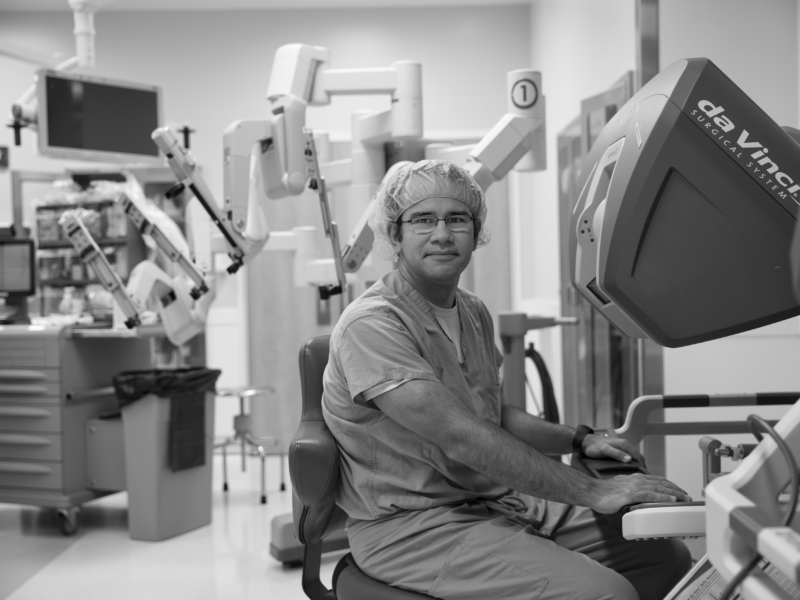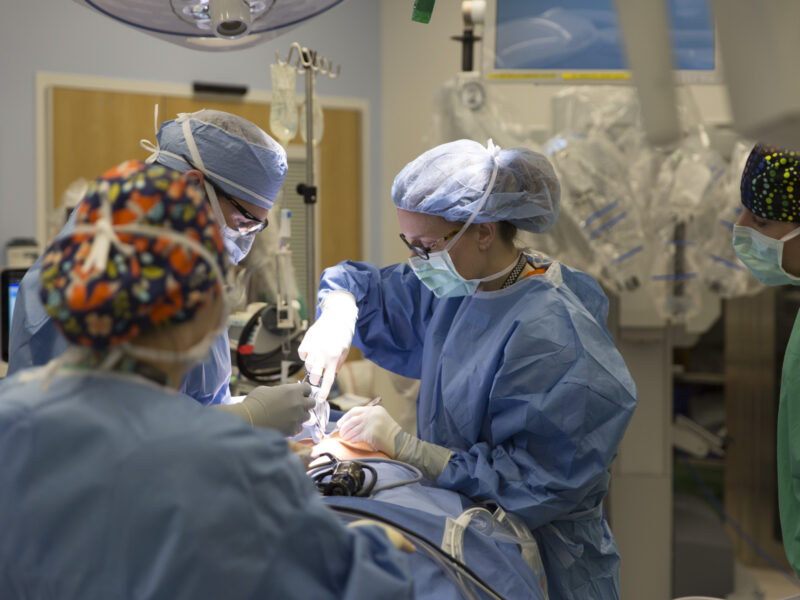Postoperative Care for Benign Ovarian Neoplasms
Postoperative Care for Benign Ovarian Neoplasms https://pediatricsnationwide.org/wp-content/themes/corpus/images/empty/thumbnail.jpg 150 150 Mary Bates, PhD Mary Bates, PhD https://secure.gravatar.com/avatar/c6233ca2b7754ab7c4c820e14eb518c8?s=96&d=mm&r=g- September 02, 2021
- Mary Bates, PhD
Study suggests no benefit from routine imaging and supports symptomatic imaging for postoperative management of benign ovarian neoplasms.
In a new study, researchers at Nationwide Children’s Hospital led a collaboration with eight children’s hospitals examining the follow-up care and subsequent outcomes of pediatric patients after surgery for a benign ovarian neoplasm to develop evidence-based recommendations for postoperative management.
According to Geri Hewitt, MD, chief of the Section of Obstetrics and Gynecology at Nationwide Children’s and senior author of the study, there has been a lot of work examining preoperative risk assessment and type of surgery to remove an ovarian neoplasm, but no research to guide what happens after surgery.
“When a girl is diagnosed with a mass in her ovary, the family wants to first know if it is cancer and what the surgical procedure will entail,” says Dr. Hewitt. “Then after surgery, they want to know what to do next.
“We know how to follow-up if they have cancer, but we wanted to know the right way to manage patients after undergoing a surgery for a benign ovarian neoplasm.”
Dr. Hewitt and her colleagues reviewed charts from patients up to 21 years old who underwent surgery for a benign ovarian neoplasm at eight pediatric hospitals over a period of seven years. While length of follow-up was variable, all patients had at least one year of follow up noting type and frequency of imaging studies performed, findings and subsequent interventions.
The researchers found that the aftercare for girls who underwent surgery for a benign ovarian neoplasm could follow one of two trajectories. About 36% of patients were automatically put onto a routine imaging protocol with regularly scheduled ultrasounds. The remaining patients only had imaging studies performed in response to symptoms or physical findings.
Factors that predicted which trajectory a patient landed on were age (younger girls received routine imaging more often) and who performed the procedure (pediatric surgeons were more likely to order routine imaging).
“Based on our data, we could not find any evidence that there was a benefit to routine imaging for these patients,” says Dr. Hewitt, who is also a professor of clinical obstetrics and gynecology at The Ohio State University College of Medicine.
“Very few girls ended up needing additional surgery. None of the girls in the routine imaging group had torsion or malignancy; only a handful of girls in the entire cohort did and they were all in the symptomatic imaging group.”
Dr. Hewitt and her colleagues conclude that ultrasound imaging following surgery for benign ovarian neoplasm should be primarily for girls that develop symptoms, such as pain, or physical findings, such as distension or a mass.
The researchers have two more related studies in the works as a result of this multisite study that will also contribute to our understanding of best postoperative care for these patients. One paper will look at the likelihood of failed ovarian sparing surgical treatment of benign ovarian neoplasm. The other will describe the probability of a repeat ovarian lesion after the index surgery based on tumor type, since recurrence rate is currently not well known.
“Our hope is that this study, along with the ones to come, will improve the way children are cared for post-operatively,” says Dr. Hewitt.
Reference:
Knaus ME, Lawrence AE, Onwuka AJ, Abouelseoud NM, Breech LL, Brito KS, Dekonenko C, Hertweck SP, Hong HY, Menon S, Merritt DF, Schikler AG, Senapati N, Smith YR, Strickland JL, Truehart AI, Minneci PC, and Hewitt GD. Recommendations for postoperative surveillance of pediatric benign ovarian neoplasms. Journal of Pediatric and Adolescent Gynecology. Available online 11 May 2021. Doi: 10.1016/j.jpag.2021.04.014.
About the author
Mary a freelance science writer and blogger based in Boston. Her favorite topics include biology, psychology, neuroscience, ecology, and animal behavior. She has a BA in Biology-Psychology with a minor in English from Skidmore College in Saratoga Springs, NY, and a PhD from Brown University, where she researched bat echolocation and bullfrog chorusing.
-
Mary Bates, PhDhttps://pediatricsnationwide.org/author/mary-bates-phd/December 27, 2016
-
Mary Bates, PhDhttps://pediatricsnationwide.org/author/mary-bates-phd/
-
Mary Bates, PhDhttps://pediatricsnationwide.org/author/mary-bates-phd/
-
Mary Bates, PhDhttps://pediatricsnationwide.org/author/mary-bates-phd/
- Posted In:
- Clinical Updates
- In Brief
- Research






